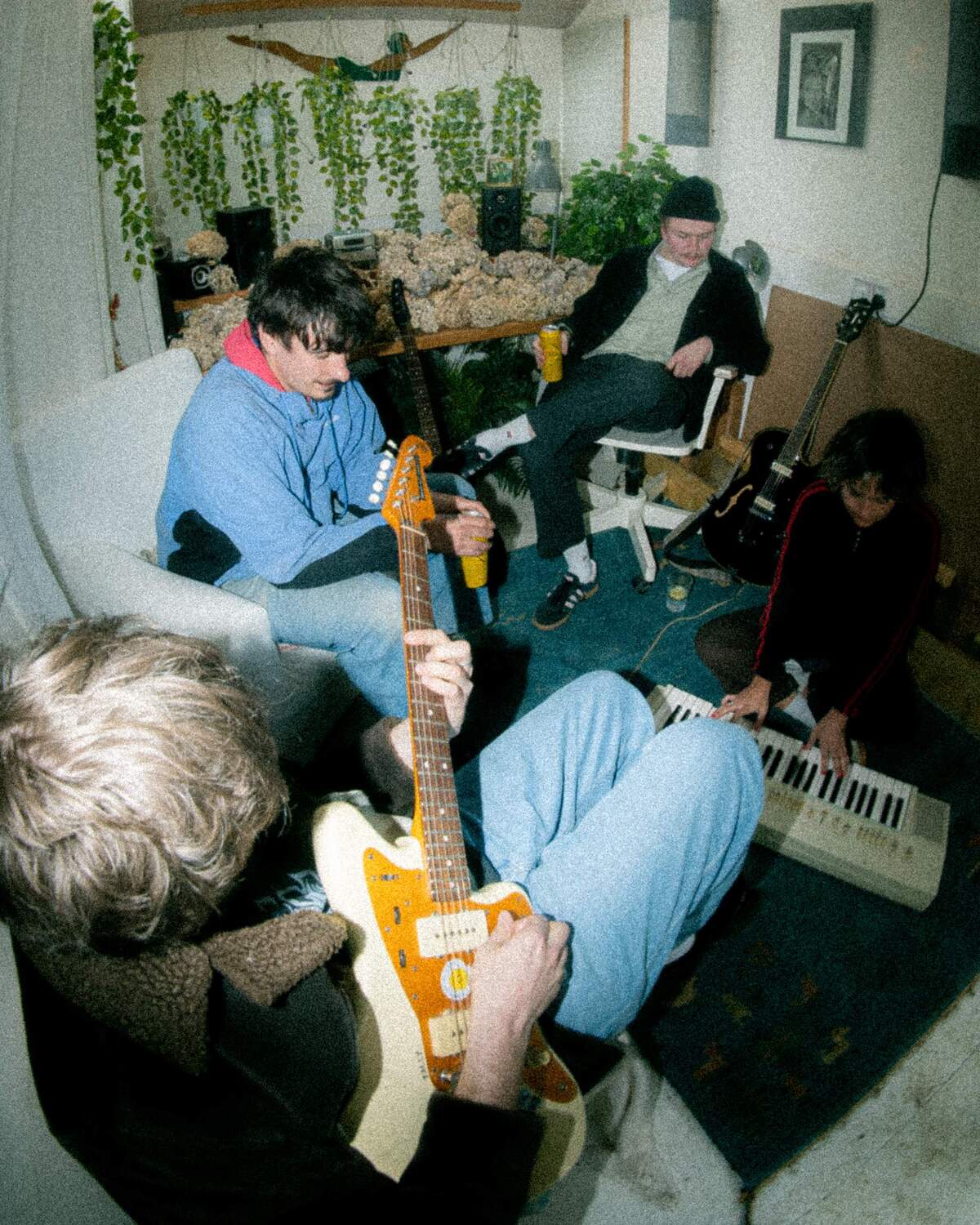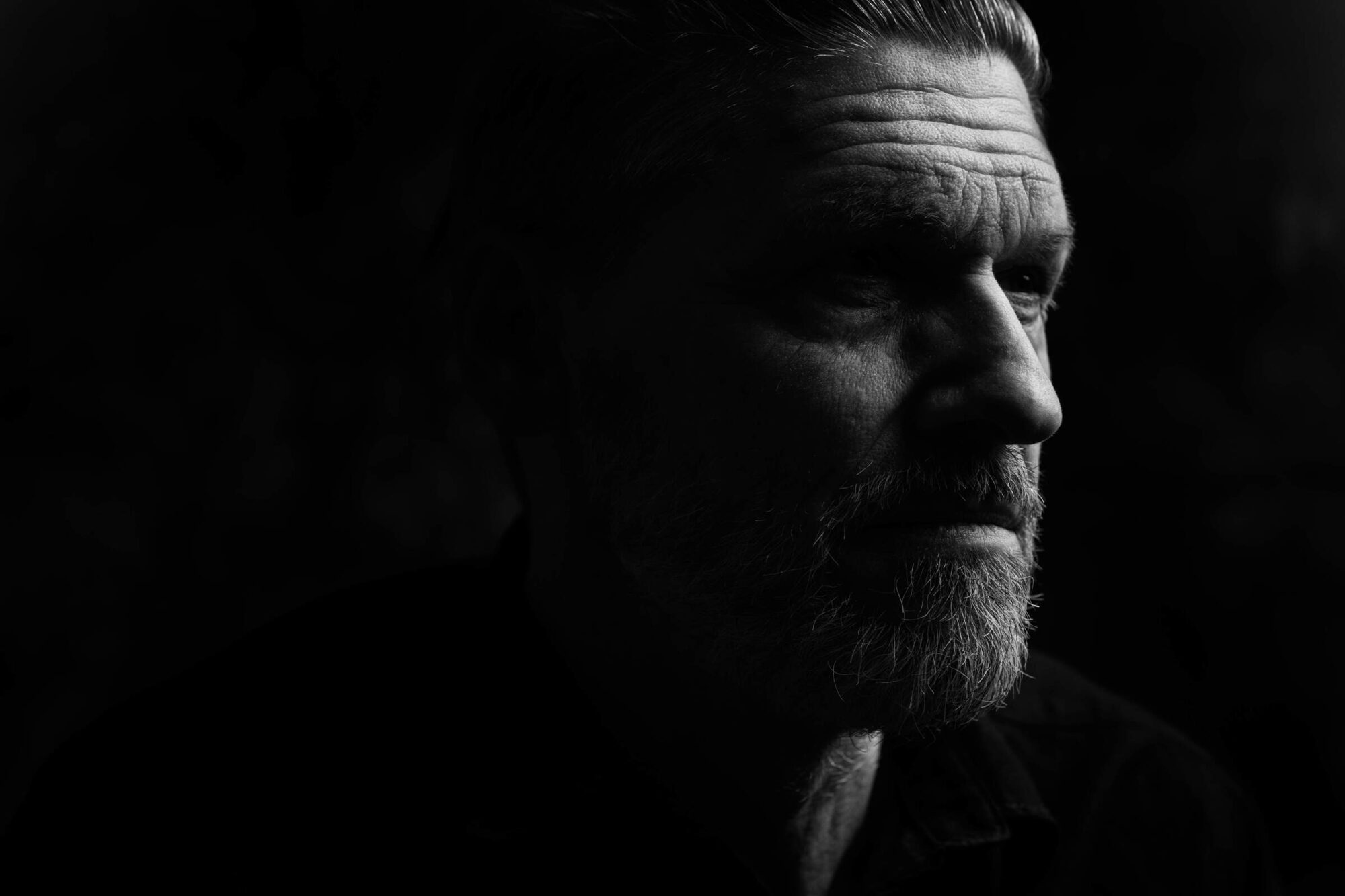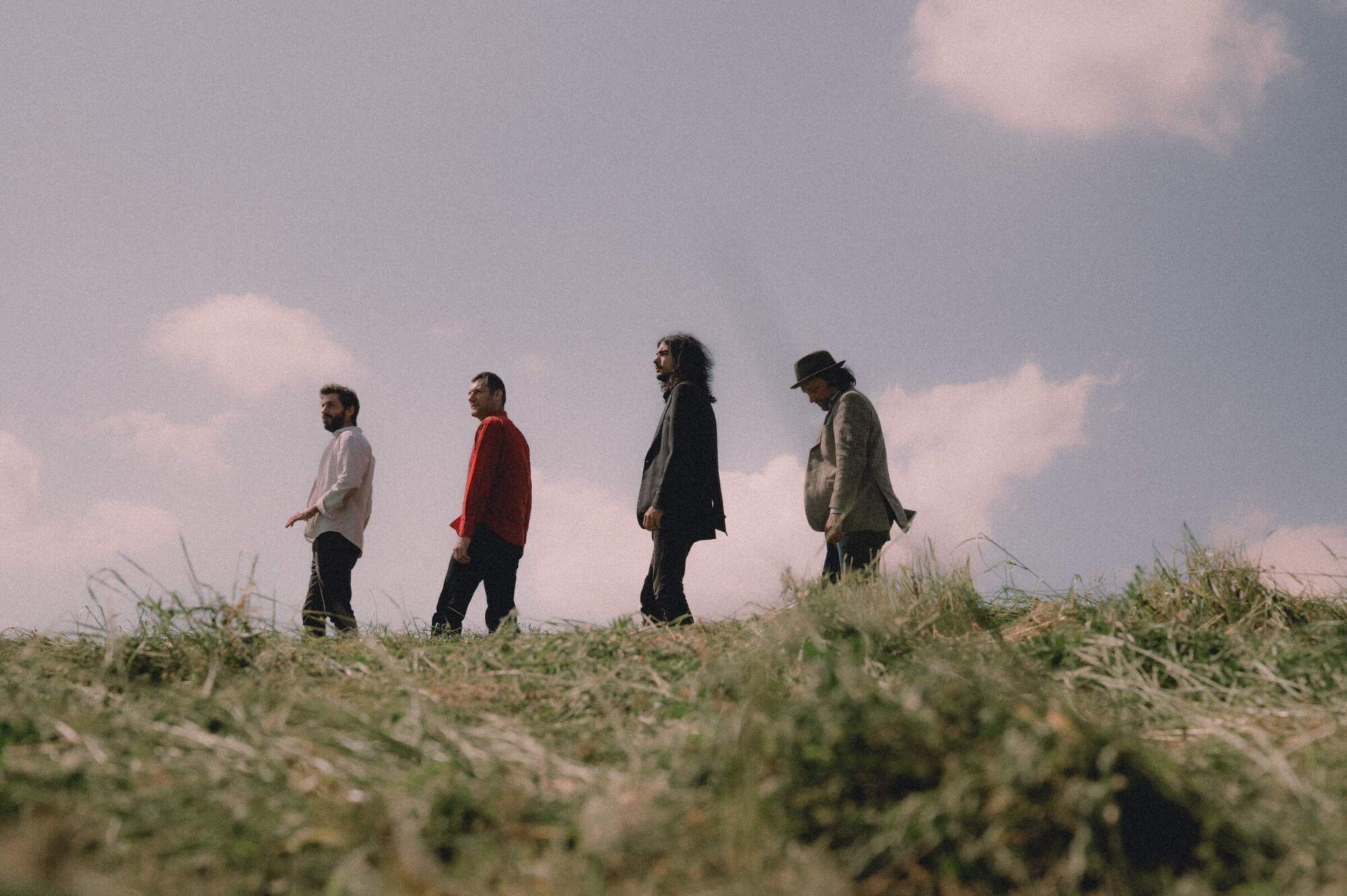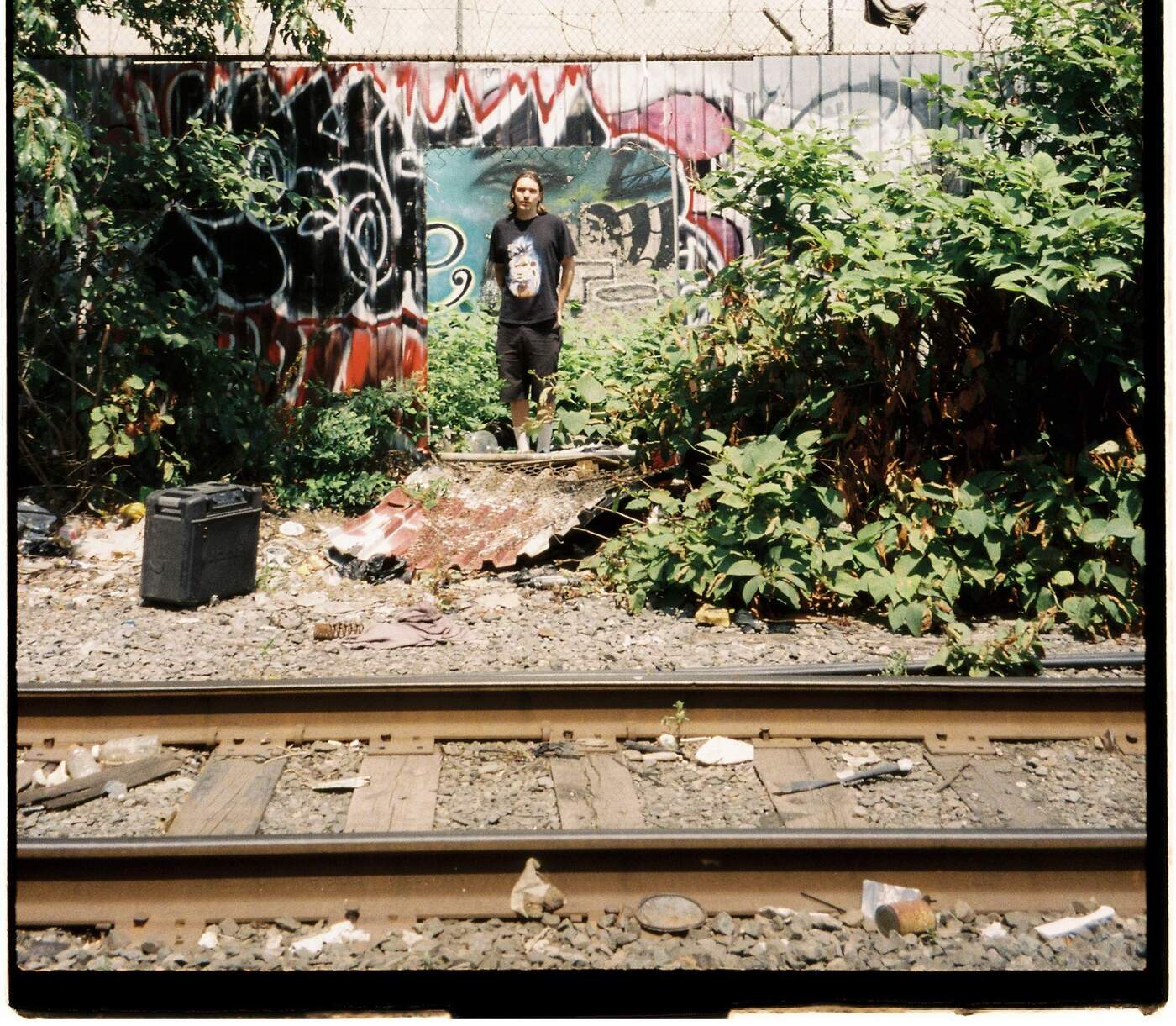Dreamwave | Interview | EP Premiere
Dreamwave’s debut EP, ‘The Mindcave,’ takes listeners on a journey through psychedelic rock and personal storytelling, recorded in a studio nestled between an abandoned swingers’ club and a dance school.
The EP captures the evolution of Dreamwave from a small Brighton student apartment to the stages of Glastonbury and beyond. The band’s origins are rooted in Brighton’s vibrant music scene, where the members bonded over a shared love for retro graphic design, Bauhaus minimalism, and sci-fi like Warhammer. But when they moved to Bristol, the raw energy of the city shaped their sound, leading to recognition from outlets like BBC Radio Bristol and Amazing Radio.
‘The Mindcave’ draws inspiration from a Polar skate video featuring Grauzone’s “Eisbär,” influencing both the sonic layers and visual aesthetics. The tracks on the EP depict intimate moments from Ben’s life, exploring themes of loneliness, psychedelic states, desire, and hope. Despite these deeper themes, Dreamwave’s sense of humor shines through in their choice of cover art: a childhood photo of Ben in a dinosaur costume, whimsically beamed into a UFO, illustrating the band’s ability to balance the personal with the playful.
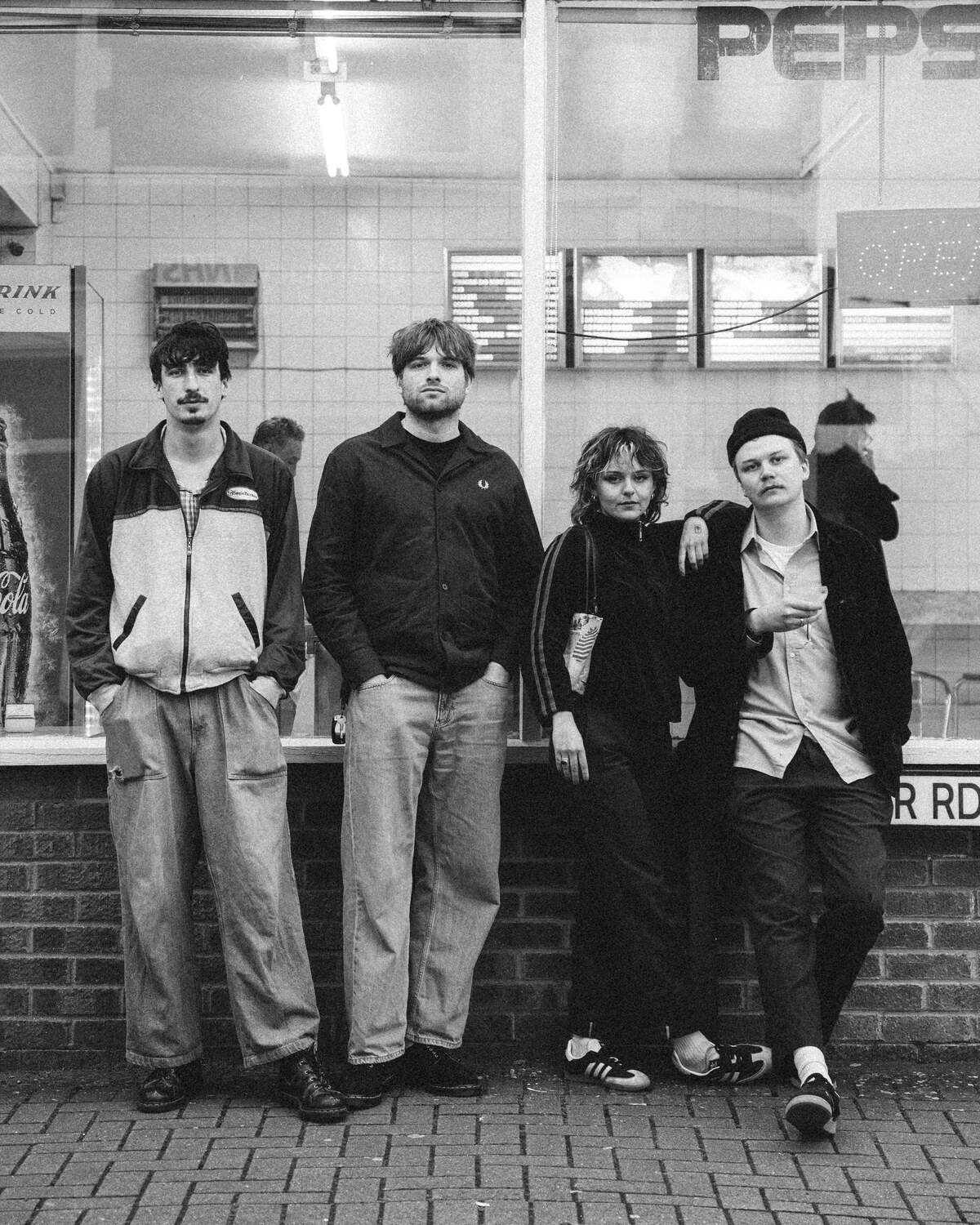
“We’ve been interrupted by many strange things”
How did you first get interested in music? Tell us about some of the main influences.
Hester: It’s different for everyone in the band. We all started at different points in our lives—the youngest being 4 and the oldest being 16 when we first picked up our instruments. We all have parents who love music, so I guess being exposed to a diverse range of genres from a young age really helped with understanding what you like and don’t like. Eventually, we all settled on psych rock and came together to make our own.
Our main influences would probably be Bee Bee Sea, Tears for Fears, Beach House, Beach Boys, The Slaughter House Band, Wand, Frankie and the Witch Fingers, Devo, Tame Impala, Night Beats, Thee Oh Sees, AC/DC, Sex Bob Omb, Gizzard, Sabbath, Longheads!
How did you know it was time to move Dreamwave from a one-bedroom project in Brighton to the big stage, eventually landing gigs at places like Glastonbury?
Cam: We were all friends in Brighton before we formed the band. One day, myself and Ben shared the demos we’d been making. Everyone got excited, and if you get excited by a sound, it seems silly not to act on it. So, we decided to form Dreamwave. I think if you’re passionate about the music that you make, it reflects in your performance, which I guess helps land bigger stages.
Retro graphic design, Bauhaus minimalism, and sci-fi seem to play a big role in your music and visuals. Can you share how these influences guide your creative process?
Ben: The Bauhaus and minimalism mainly come from my background in graphic design. These influences help me write lyrics about spicy, spacey stuff. All of these influences have a simplicity but can also be complex subjects, which we feel is similar to and replicated in our music.
The inspiration for ‘Mindcave’ comes from Frodo’s escape through Shelob’s Lair in Lord of the Rings. How did you translate that tension and urgency into your song?
Alex: A wizard is never late!
Recording at a studio next to an abandoned swingers club and above a dance studio must have been interesting. What’s the most memorable moment from your sessions at Nine Volt Leap?
Hester: During takes on the EP, we’ve been interrupted by many strange things—like our own little sitcom. One time, the police walked in looking for someone while Ben was mid-shred. Another time, we were returning from a lunch break and the hallway was filled with smoke, along with the sounds of banging and shouting. Turns out that there’s also an airsoft unit next door—where people are constantly setting off grenades, and yellow pellets are flying everywhere.
Ben: As far as the dance studio goes—Zumba has bad playlists.
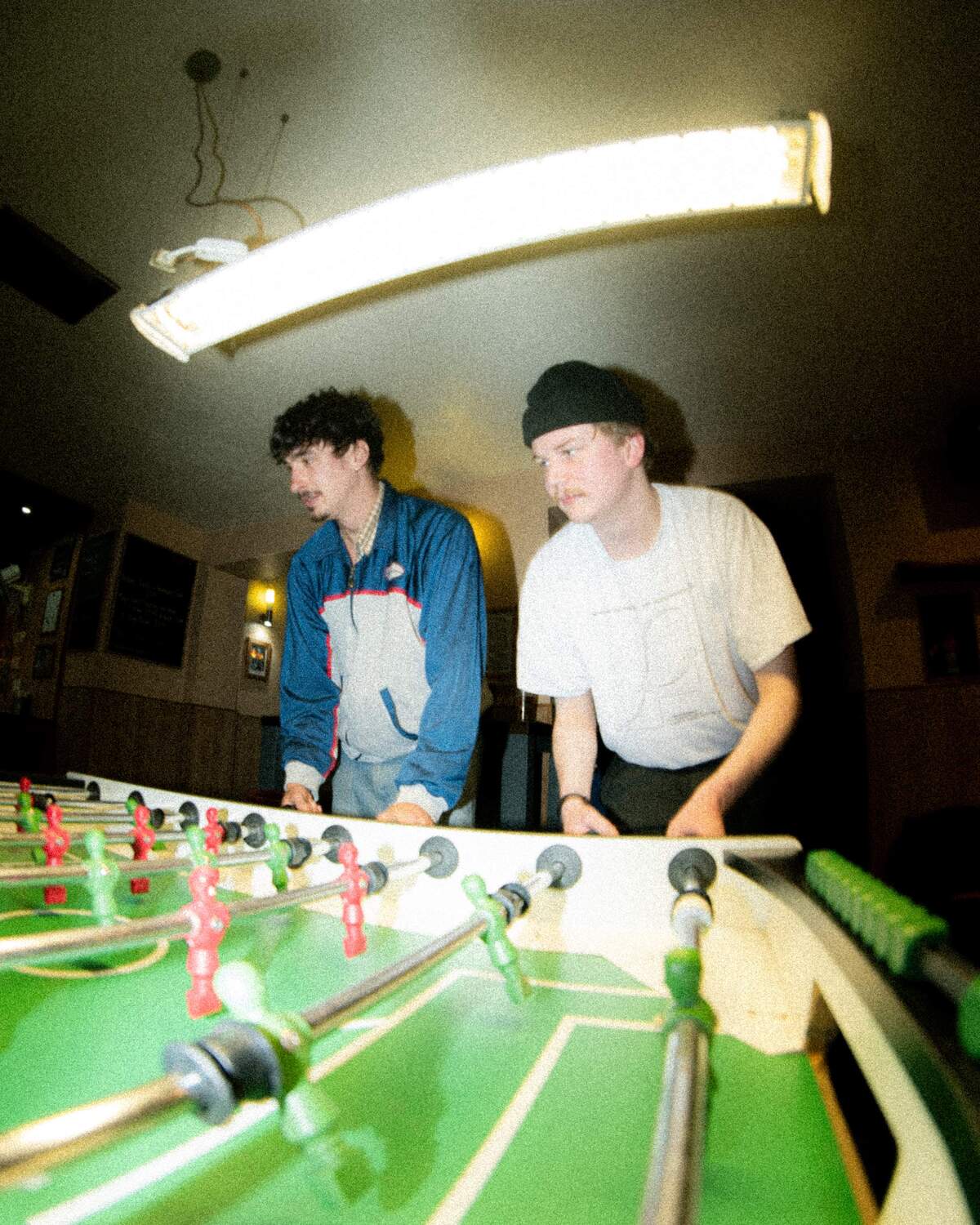
Your EP features themes inspired by Warhammer and Star Wars. What are your favorite sci-fi or fantasy references that made their way into your music or lyrics?
Ben: The tannoy section in ‘Void’ is an indirect reference to the 1978 Star Wars Holiday Special. It’s a bit of a joke because this Star Wars film was completely wiped off the face of the earth by George Lucas because he hated it.
Hester: I think we were talking about Back to the Future and then started thinking about space travel, which then resulted in Cam freestyling tannoy vocals naming intergalactic versions of London tube stops. We’d love to give you an example, but even Cam can’t remember what he’s yelling.
Dreamwave’s sound combines vintage and modern elements. How do you strike a balance between different influences to create your unique style?
Alex: We think that just happens naturally. While we all have a mutual love for psych, each of us individually has a very broad taste in music, so it’s probably helped that everyone’s pulling from different inspirations.
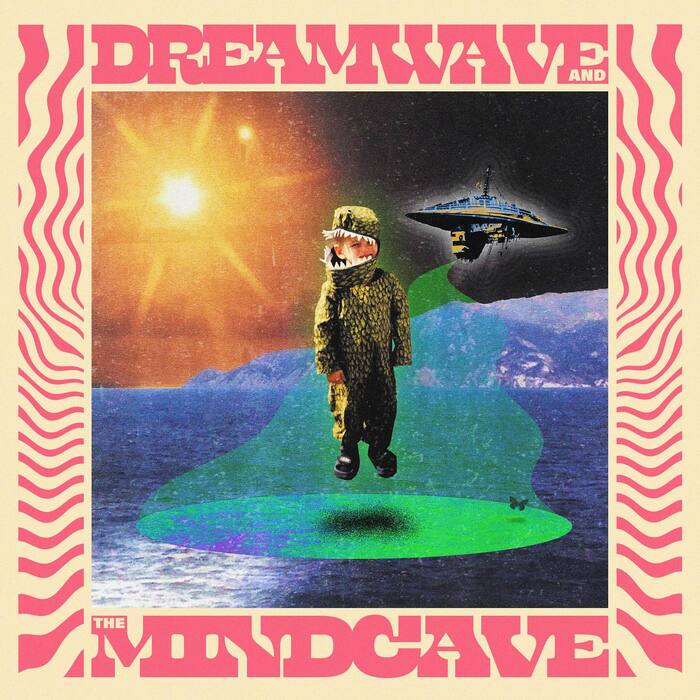
In ‘Void,’ you used a child’s Chad Valley Sing Along toy to achieve a unique sound. How do you come up with unconventional recording techniques like this?
Alex: It was originally suggested as a bit of a joke, but once we played with it a bit, we quickly realized it sounded great and decided to make it a main feature in the song. All credit to Dom “The Goat” Bailey. It became a bit of a secret weapon throughout the EP. We’ve lost count of how many times it was used.
During the filming of your ‘Mindcave’ video, you had to deal with National Park rangers and potential fines. How did you turn that disruption into a successful shoot?
Hester: Yeah, that wasn’t a great start. The whole day was a bit of a struggle, really—have you ever seen that film The Descent? It felt a bit like that. My car window had been smashed the day before, and we woke up at 3:30 a.m. to get there on time. The 2-hour drive down the motorway with no window was pretty miserable. So, to then get there and film for an hour before being told to leave was pretty brutal. It was the epitome of a bad day. So, we left, drove home, and got very drunk.
We spent two weeks working to get the permit we needed. It was a proper labor of love, but we’re incredibly happy with the outcome!
Moving from Brighton to Bristol must have brought new influences. How has the change in environment affected your music and your creative process?
Alex: We were a band in Brighton, but at the time, it felt more like the band was just something to do for fun. When we moved to Bristol, Hester joined the lineup, and we started to release music and put more work and thought into it. When we were in Brighton, there was a melting pot of amazing psych bands, but Bristol has always had a very diverse scene that has always rubbed off on us.
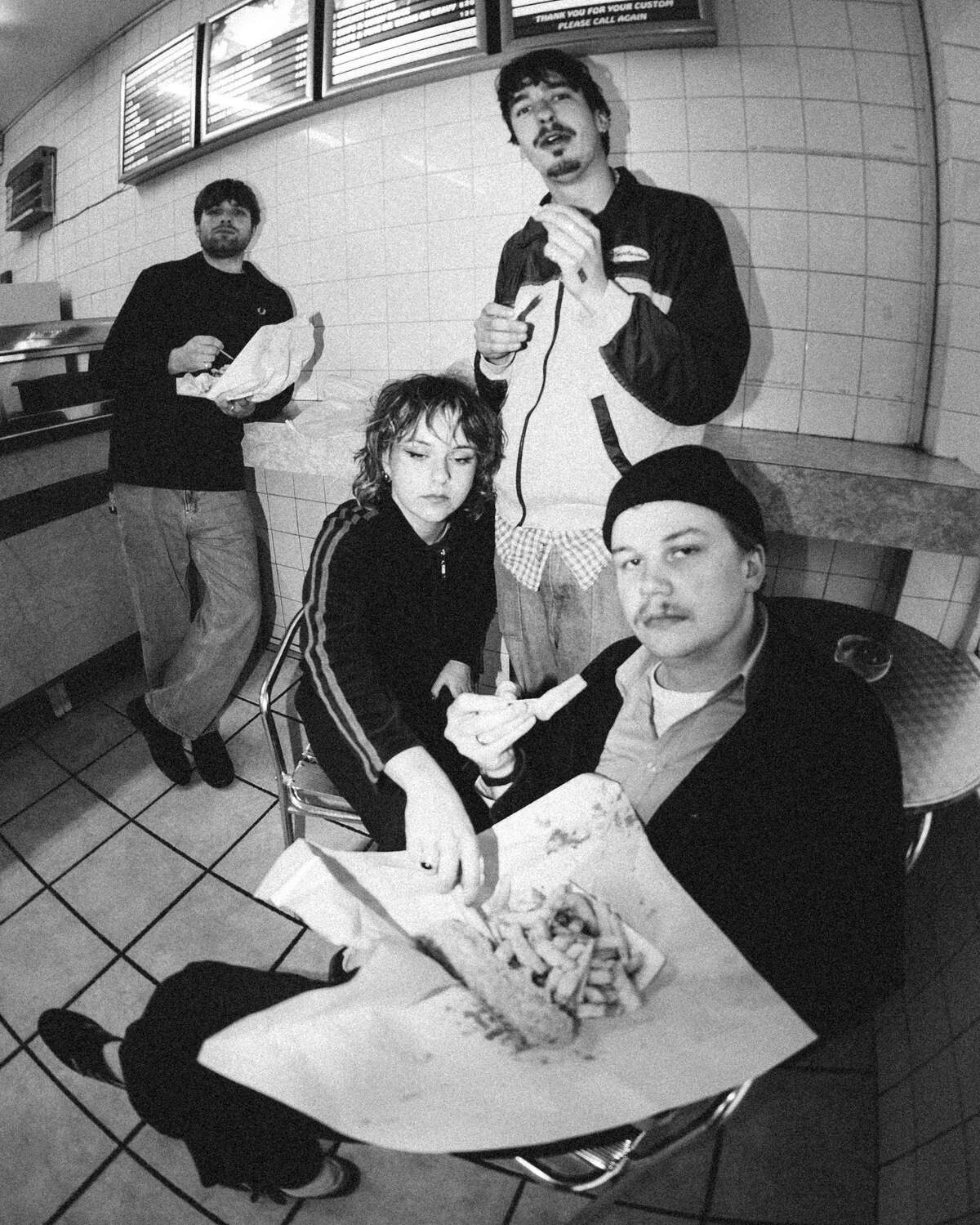
What’s next for you?
Ed: I set this label up to be ambitious and creative, so Velvet Echoes remains pretty busy. When I’m not working my day job, I work on the label. It’s been a lot of fun. A highlight is being part of the Merch Ops team at Levitation, ATX. I’m looking forward to doing that again this year.
In terms of what’s next for the label, I’m breaking into London to promote free shows at the Old Blue Last. The first of these is Frank & Beans, Dreamwave, and Spitting Image on June 7th.
I’ve recently announced the lineup for my festival, Down Stokes, a psych, garage, and fuzz festival in Bristol that takes place every October in Stokes Croft. I’ve signed Wakey Wakey Rise and Shine and am planning to release more music with the Austin, TX-based outfit “The Holy Temple.”
Klemen Breznikar
Headline photo: Sam William Andrews
Dreamwave Facebook / Instagram / Bandcamp / YouTube
Velvet Echoes Official Website / Instagram

